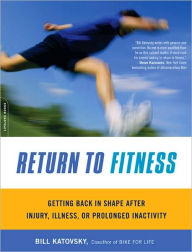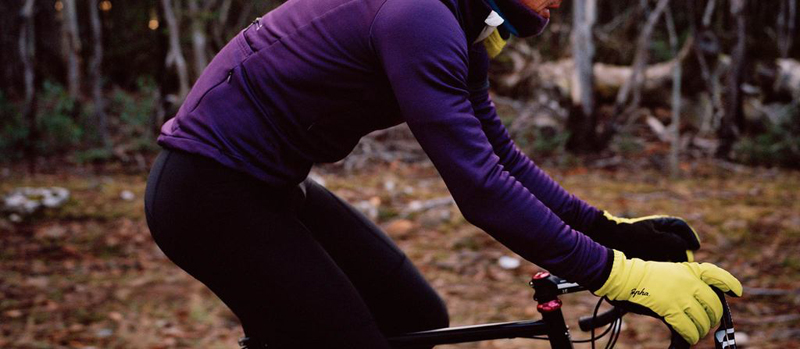 Bill Katovsky was a two-time Hawaii Ironman finisher, a guy who bicycled solo across the U.S., an endurance athlete who competed in a three-day race mountain bike race across Costa Rica. But through a series of misfortunes, including depression, losing his dog, death in his family, and debilitating health problems, Katovsky went from being a multisport junkie to complete couch potato. He stopped working out. For almost ten years! By the time he hit fifty, he decided it was time for a change. How he fought his way back to fitness is not only a riveting, brutally honest, and ultimately inspiring story, it is also a hands-on guide to help anyone reclaim health and well-being.
Bill Katovsky was a two-time Hawaii Ironman finisher, a guy who bicycled solo across the U.S., an endurance athlete who competed in a three-day race mountain bike race across Costa Rica. But through a series of misfortunes, including depression, losing his dog, death in his family, and debilitating health problems, Katovsky went from being a multisport junkie to complete couch potato. He stopped working out. For almost ten years! By the time he hit fifty, he decided it was time for a change. How he fought his way back to fitness is not only a riveting, brutally honest, and ultimately inspiring story, it is also a hands-on guide to help anyone reclaim health and well-being.
Mr. Katovsky supplements his personal story with those of others successfully making a return to fitness—an astronaut who spent five months in space; a former Wall Street trader who lost seventy-five pounds and became Hawaii’s Fittest CEO; a retired two-time world-champion Hawaii Ironman triathlete with a bum hip that needed replacing, a Yosemite park employee who broke her spine in a hiking accident and is now back on the trails; and a sixty-something business educator who’s had six heart bypasses but still backpacks and goes to the gym.
With the advice of personal trainers, fitness experts, and multisport coaches, Katovsky offers a wealth of useful information in his book, Return to Fitness. Mr. Katovsky has graciously offered Wear Tested Gear Review (WTGR) reprint rights to Chapter 6, “Learning the right way to run and getting back on the bike“, so WTGR readers who are new to cycling or need to get back to cycling will learn the relationship between bike fit, positioning, time spent riding, conditioning, and upper-body strength & flexibility – your body adaptation. And now, words of wisdom from Mr. Katovsky.
Return To Fitness: Bike Fit
The process of familiarization begins with bike fit. An improperly sized bike creates a cascading set of problems that can range from simply annoying to potentially troubling.
A new, expensive $6,000 carbon-fiber bike can hurt as much as a Walmart all-steel $149 clunker. Discomfort is not eliminated by price. Perched on a bike in a store is not the same as riding it. Nor will taking a few laps in the parking lot give you an accurate depiction of what to expect. Even books targeted to beginning cyclists offer in theory what can only be experienced through actual riding. Meanwhile, cycling magazine articles and websites can leave readers befuddled with complicated esoterica on body positioning and frame geometry.
Is there an easier way to understand bike fit? Paul Levine, owner of New York–based Signature Cycles, is nationally known as the “fit guru.” He spends a great deal of time fitting wealthy bike owners at $200 a pop. For the average rider, however, as Levine explained in Bike for Life: How to Ride to 100, positioning can be neatly summarized as follows: “The proper posture to have while seated on a bicycle is like sitting on a chair that you know is about to be pulled out from under you.” In other words, you should be leaning forward with your back in a neutral position. This also allows you to exert maximum pedaling power while your upper body remains in a relaxed mode.
Through further investigation into bike fit for recreational riders, I came across a website for Gregg’s Cycles, a popular chain of three stores in the Seattle area. Their informative article “Your Bike Doesn’t Have to Hurt You!” states that “we’ve been in the bike business for a long time (since 1932 in fact) and the most common complaint about cycling is that it hurts.” There are three types of pain: falling off a bike and getting a terrible case of road rash; being out of shape; and “mechanical pain” caused by improper fit.
“Fit is the most important factor in purchasing a bike, new or used,” says Gregg’s Cycles. “Every day we get asked, ‘what’s the best bike for me?’ and the answer should always be, ‘the one that fits.’ If you go to a reputable bike shop, and stay away from the big box stores that have a few bikes, you know that you will get a quality bike. So you just need to buy a quality bike that fits you. You could pay $200 and get a great bike that fits and love riding it. Or you could pay $2,000 and get a great bike that doesn’t fit and never ride it. The $2,000 bike might be better, but it doesn’t matter if you don’t ride it because it hurts. If it fits you’ll ride it, if it doesn’t fit it will hang out in the garage.”
According to Gregg’s Cycles, the three most important criteria regarding bike fit are the following:
- Stand Over Height: “On a road bike you want to have at least an inch between you and the bike when you are straddling the bike and standing on the ground. You should have at least two inches with a mountain bike.”
- Saddle Height: “When you are sitting on the seat you’ll be able to touch the ground with your feet but only with your toes. As you sit on the saddle (this will be easier if someone is holding you up) you should pedal backwards until one of your feet is at the very bottom of the pedaling motion. Once it’s there, stop and make sure that your foot is parallel to the ground. When your foot is in this position you should have about a 10 percent bend in your knee. No more. No less.”
- Reach: “Reach is described by the distance between your saddle and the handlebars. When sitting on your saddle in the most comfortable position you should be able to reach forward and hold on to the handlebars with a comfortable bend in your elbows. You should also have a nice ‘ready’ or neutral back posture.”
A good bike shop will help you find a bike that fits your body. Proper sizing might require some adjustments with the seat and height of the handlebar stem. Even the most minute change in saddle height can be critical to the discerning rider. Legendary pro cyclist Eddy Merckx used to carry a small tool to adjust his seat while he was racing.
In future installments: Saddle (The Butt), Knees, Feet, Hands, Neck, Shoulder, Back, Climbing, Descending


3 thoughts on “Return To Fitness: Introduction, Bike Fit”
Comments are closed.